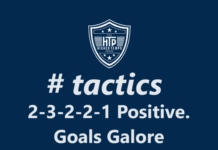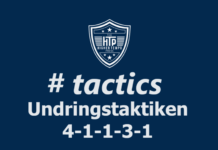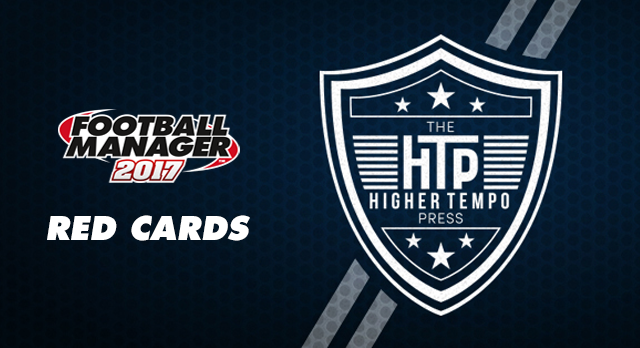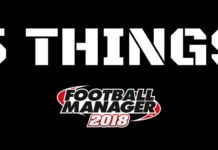On the FM space on Slack I see lots of managers bemoaning red cards. My first response is to sympathise. Red cards can be sickening. One player’s irresponsibility can throw away a match and, with it, perhaps even a season.
Yes, Anthony Grant, I’m looking at you. Remembering especially when you were one of four red cards that my Crewe team picked up in a single match. But that wasn’t the only time, was it?
My second response is that, if you’re dismayed by red cards, you need to minimise their occurrence by implementing a policy. Though red cards are not entirely within your control, you certainly can have an influence.
So here’s my policy:
- Before acquiring a player, look at his history. How many cards, especially red, does he pick up? If several, then buyer beware.
- Look at the player’s profile. In particular, look at the aggression attribute. The higher it is, the greater the risk.
- But obviously you don’t want to sign lots of low aggression players. You want players who get involved and who want that ball! So look at psychological factors that might balance the aggression: good composure can help a player control his aggression; good teamwork can make him less likely to expose his team mates by getting sent off; and good decision-making might help him be more judicious. Personality has a role here too: professional personalities, for example, are more likely to behave responsibly.
- Now look at what the player is able to do on the pitch. If he has good positioning, acceleration, and anticipation, he has more chance of getting himself in the right place and so will be more likely to win the ball without fouling. If the player is good at tackling and marking, they may know how to do these things without being clumsy. (Clumsy? Yes, Ben Nugent, I’m looking at you now.)
- Some of the above attributes — anticipation, for example — are difficult to train specifically: they can be trained only as part of positional/role training. But others, such as positioning, can be trained directly. I find that, often, young defensive players have relatively poor positioning but do respond to training. They also often have poor composure: yet although you can train composure, I find young players tend to be unresponsive.
- Developing traits can also be used to reduce the risk of red cards. Look at the defending options. especially teaching a player not to dive in.
- Before the match, look at who’s going to be officiating. Some referees rarely give red cards; other dish them out for fun. If you have an aggressive player, you might be more willing to risk them under the former than the latter.
- In the game, if a player picks up a yellow, monitor them. If they look, say, calm or composed, things may be OK, whereas if they look fired-up or aggressive, be afraid. Talk to them: tell them to calm down or concentrate. Or take them off. It’s important here to get to know your players: some players on a yellow can be trusted, others can’t.
- At half time, tell players on a yellow to calm down in order to avoid getting a second.
- If a player does get a red, think how to adjust. It’s not really possible to be categorical here — how you should respond will depend on your team, your tactics, and the match circumstances. Speaking personally, I tend to go on attack, to get the ball away from my goal and, indeed, to see whether we can nick a goal. I also like, if possible, to post a wide target man as an outlet, in order to keep possession.
- In the post-match team talk, yell at the player, tell him you’re disappointed.
- Use press conferences to send a message to the player concerned — that getting sent off is a serious matter and, in particular, that the player’s team mates have been let down.
- Have a consistent policy for disciplining players who have been sent off. My policy is: first card, fined one week’s wages; second card, two weeks’. I say ‘consistent’, because I think it’s best to ignore potentially mitigating circumstances. Yes, that might be unfair on individual player: perhaps the ref was mistaken or unduly harsh, for example. But my thinking here is that if you try to take account of circumstances when determining the level of disciplinary response, the squad will perceive you as being inconsistent and you will upset more players that way than if you are unbending.
- If possible, avoid rushing them straight back after the suspension has ended. This seems to have a considerable impact on the player, not least because they lose out on appearance money.
- Needless to say, it helps if your own discipline attribute is high.
As I said earlier, red cards are not entirely within your control. But if you implement the above policy, it will reduce the number of incidents.
And think of the benefits. Not only do you not go down to ten men; you can also, by not having changes forced upon you, maintain continuity; and by minimising suspensions, it is easier to get away with a small squad. Consequently, a red card policy is, in effect, a money-saving option.
The greatest reward I’ve received from the red card policy was when I was managing Episkopi in the Greek Super League. Two years running we qualified for Europe by virtue of the fair play system.

























